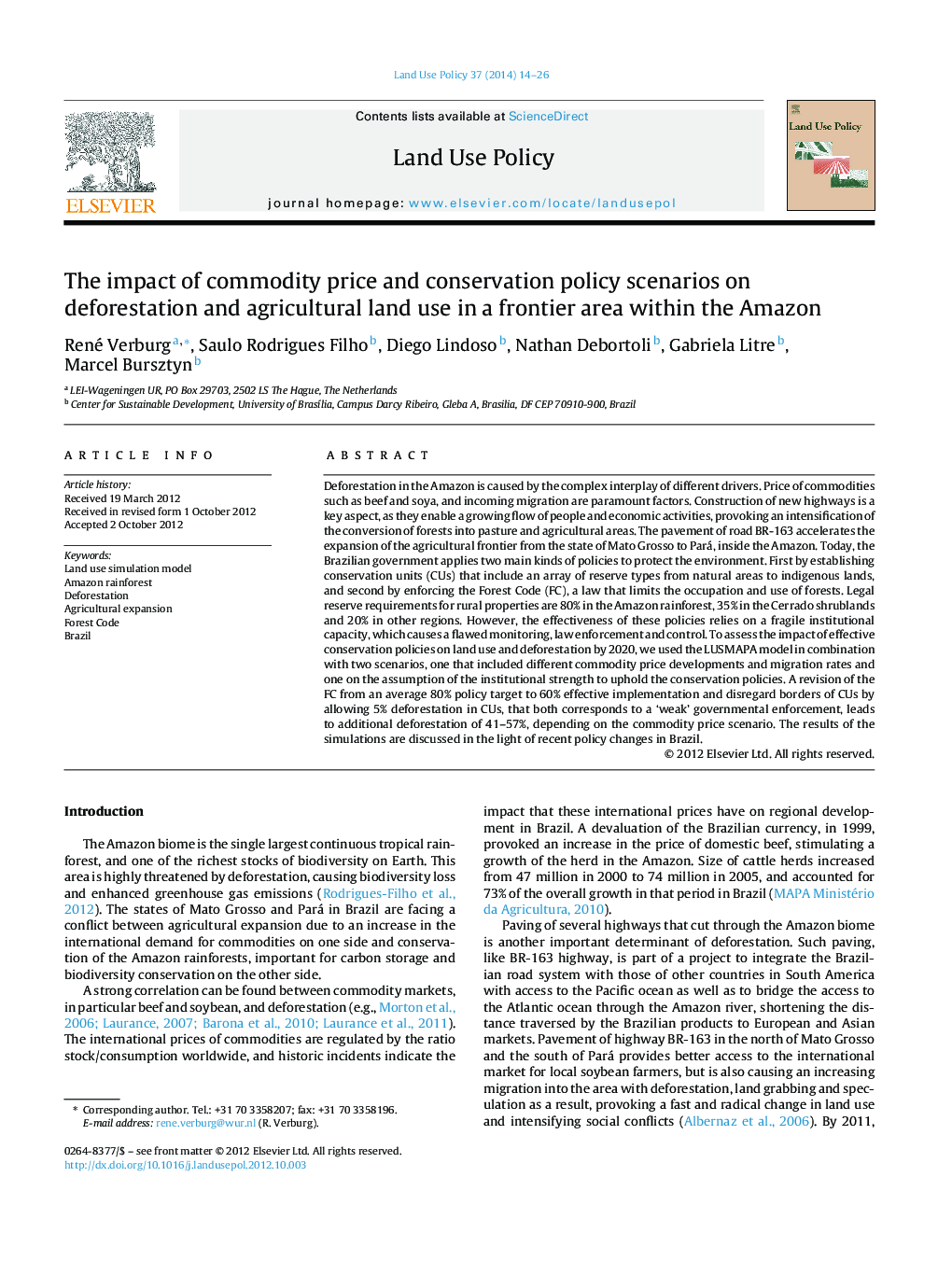| Article ID | Journal | Published Year | Pages | File Type |
|---|---|---|---|---|
| 93152 | Land Use Policy | 2014 | 13 Pages |
Deforestation in the Amazon is caused by the complex interplay of different drivers. Price of commodities such as beef and soya, and incoming migration are paramount factors. Construction of new highways is a key aspect, as they enable a growing flow of people and economic activities, provoking an intensification of the conversion of forests into pasture and agricultural areas. The pavement of road BR-163 accelerates the expansion of the agricultural frontier from the state of Mato Grosso to Pará, inside the Amazon. Today, the Brazilian government applies two main kinds of policies to protect the environment. First by establishing conservation units (CUs) that include an array of reserve types from natural areas to indigenous lands, and second by enforcing the Forest Code (FC), a law that limits the occupation and use of forests. Legal reserve requirements for rural properties are 80% in the Amazon rainforest, 35% in the Cerrado shrublands and 20% in other regions. However, the effectiveness of these policies relies on a fragile institutional capacity, which causes a flawed monitoring, law enforcement and control. To assess the impact of effective conservation policies on land use and deforestation by 2020, we used the LUSMAPA model in combination with two scenarios, one that included different commodity price developments and migration rates and one on the assumption of the institutional strength to uphold the conservation policies. A revision of the FC from an average 80% policy target to 60% effective implementation and disregard borders of CUs by allowing 5% deforestation in CUs, that both corresponds to a ‘weak’ governmental enforcement, leads to additional deforestation of 41–57%, depending on the commodity price scenario. The results of the simulations are discussed in the light of recent policy changes in Brazil.
► We model deforestation and agricultural expansion along road BR-163 in the Brazilian Amazon. ► Increase of commodity prices of beef and soy from 2008 to 2020 strongly increase deforestation. ► A revision of the Forest Code law leads to additional deforestation of 41–57%. ► The effectiveness of conservation policies rests on the institutional strength, such as law enforcement. ► Tight conservation policies can reduce deforestation rate without reducing agricultural production much.
